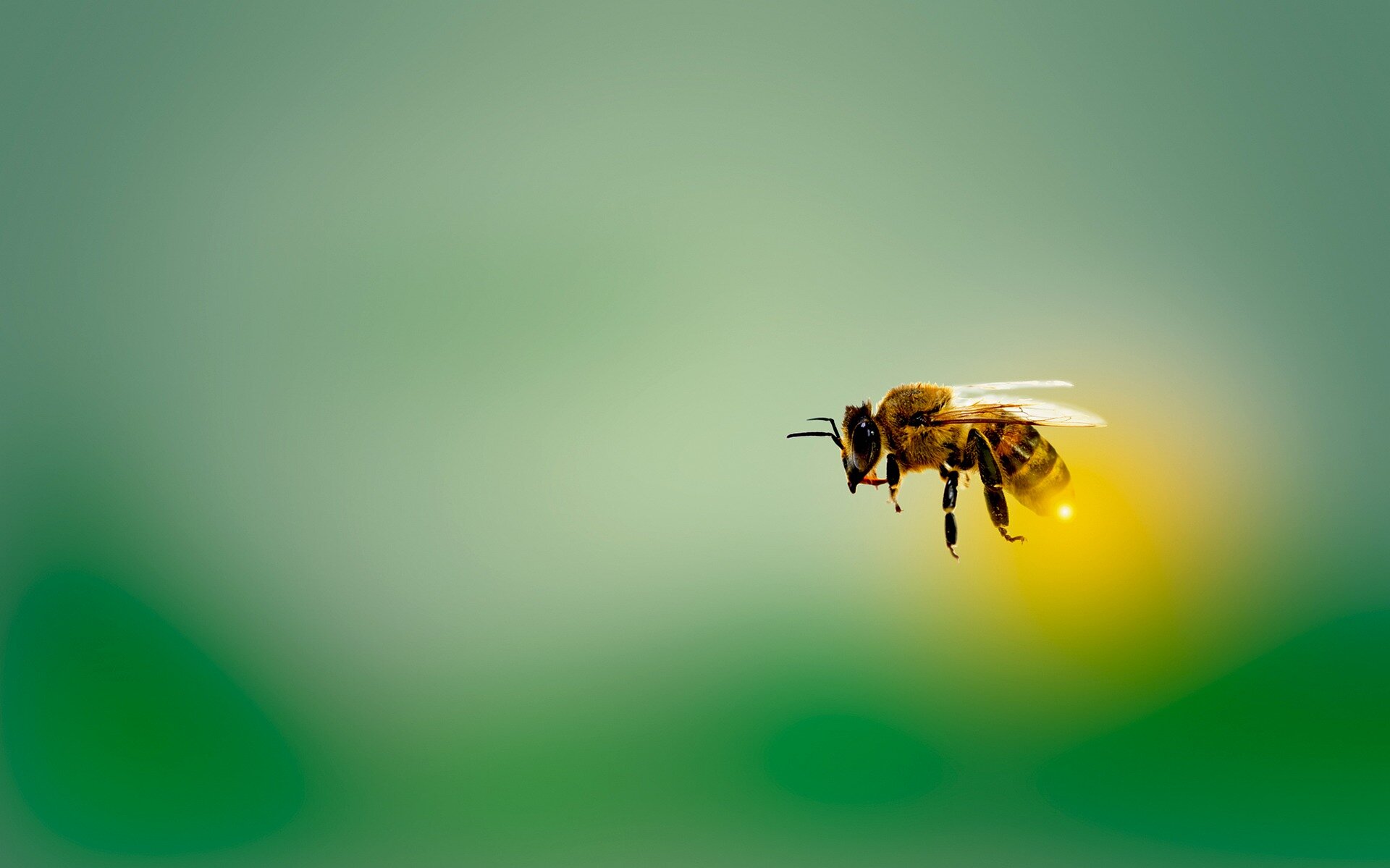Credit: Pixabay/CC0 Public Domain
To sting or not to sting? An alarm pheromone plays a crucial role in the readiness of the bees to sting – and in their group size, as scientists from the University of Konstanz have now shown
As the saying goes, “Honey catches more flies than vinegar.” Honey bees, on the other hand, prefer to avoid catching, but their honey attracts numerous predators to the colony. Some, like flies, are quite easily deterred. Other predators are much larger than the bees and willing to accept numerous honeybee stings for the sweet nutrients. To fend them off, the honey bees must join forces in a collective sting attack.
This defensive response is typically initiated by transiently specialized honey bees called guard bees. They monitor the colony’s surroundings. If they spot a large animal approaching the colony, the guard bees will respond by either stinging the intruder or by extending their stinger and fanning their wings, sometimes while running into the hive where their nestmates are located.
“In both cases, their behavior causes the release of the sting alarm pheromone, a complex olfactory compound carried directly on the stinger,” says neurobiologist Morgane Nouvian.
This chemical signal awakens nearby honey bees and recruits them to the site of the disturbance. There they decide whether or not to participate in the defense by stinging or otherwise harassing the predator. Therefore, the sting alarm pheromone plays a major role in the colony’s defensive response. But does the group size also play a role?
Interdisciplinary study examines how conditions influence the defensive responses of individual bees
An interdisciplinary collaboration between young scientists – the biologist Dr. Morgane Nouvian and computer scientist junior professor Tatjana Petrov from the Center for the Advanced Study of Collective Behavior at the University of Konstanz – developed a model and methodology to quantify the responsiveness to the alarm pheromone evolving during a defensive event for any given group size. The results were published in PLOS Computational Biology on September 15, 2022.
“Our biological goal is to study the effects of environmental conditions on the defense response of individual bees,” says senior author Morgane Nouvian. In this work, the research team focused on the effects of group size, as previous studies have shown that this factor can influence aggressive responses in social insects.
“Addressing this biological target opened up new challenges for informatics,” said Petrov. “Understanding social feedback—how collective behavior adapts to changes in group size—requires dealing with complex models and limited experimental data, and thus the integration of model-based and data-driven methods.”
Two-part research approach
The authors first observed the behavior of groups of bees confronted with a false predator, a rotating dummy, and quantified their defensive response by simply counting the number of stingers embedded in the dummy at the end of a trial. They then proposed a mathematical model of group dynamics that transparently links the probabilistic decision of an individual bee to sting at a given alarm pheromone concentration to the collective outcome observed in the experiment.
Extracting the behavior of individuals from group-level data is an interesting problem from a multilevel computer science perspective. “First, models of group behavior that enumerate every possible social context of an individual suffer from the combinatorial explosion of states, but also from a growing number of model parameters,” says Tatyana Petrov. “Moreover, many sources of uncertainty, such as random selection of individuals, unknown parameters, or limited sample size, require novel methods for quantifying uncertainty.”
Bees consider their social context when making the decision to sting
The cooperation between computer scientists and neurobiologists opens up new perspectives on research for both sides. “On the computational side, we proposed a novel methodology to extract individual behavior from population data,” says Petrov. “To do this, we have uniquely combined state-of-the-art formal methods and statistical inference.”
A software tool created by the authors integrates all steps of the analysis process in a modular way. The software, developed and maintained by PhD student Matej Hajnal, allows to focus on the biological question while having clear model interpretation on the one hand and uncertainty quantification on the other.
“On the biological side, we provide evidence that bees consider their social context when making the decision to sting,” says Nouvian. “We arrive at this evidence by doing our analysis for each group size separately and then comparing the dose-response curve to the alarm pheromone obtained.” The authors show that recruitment becomes less effective with increasing group size and thus social inhibition plays a role in addition to alarm pheromone communication.
“Our methodology addresses a specific social phenomenon in honey bees, but can also be viewed as a proof-of-concept for the current challenge of ‘opening’ the black-box models of observed collective behavior and providing interpretable behavioral hypotheses at the level of Individuals,” says Petrov. She anticipates that her approach can be applied to a range of other biological systems Uncertainty quantification in the case of, for example, large populations, imprecise measurements, and a richer cognitive capacity of individuals.”
To sting or not to sting? How bees organize defensive behavior
Tatjana Petrov et al, Extracting individual traits from population data reveals a negative social effect during honey bee repellency, PLOS Computational Biology (2022). DOI: 10.1371/journal.pcbi.1010305
Provided by the University of Konstanz
Citation: Honeybees less likely to sting in larger groups (2022 September 15) retrieved September 15, 2022 from https://phys.org/news/2022-09-honeybees-larger-groups.html
This document is protected by copyright. Except for fair trade for the purpose of private study or research, no part may be reproduced without written permission. The content is for informational purposes only.
#larger #groups #honey #bees #sting


Leave a Comment